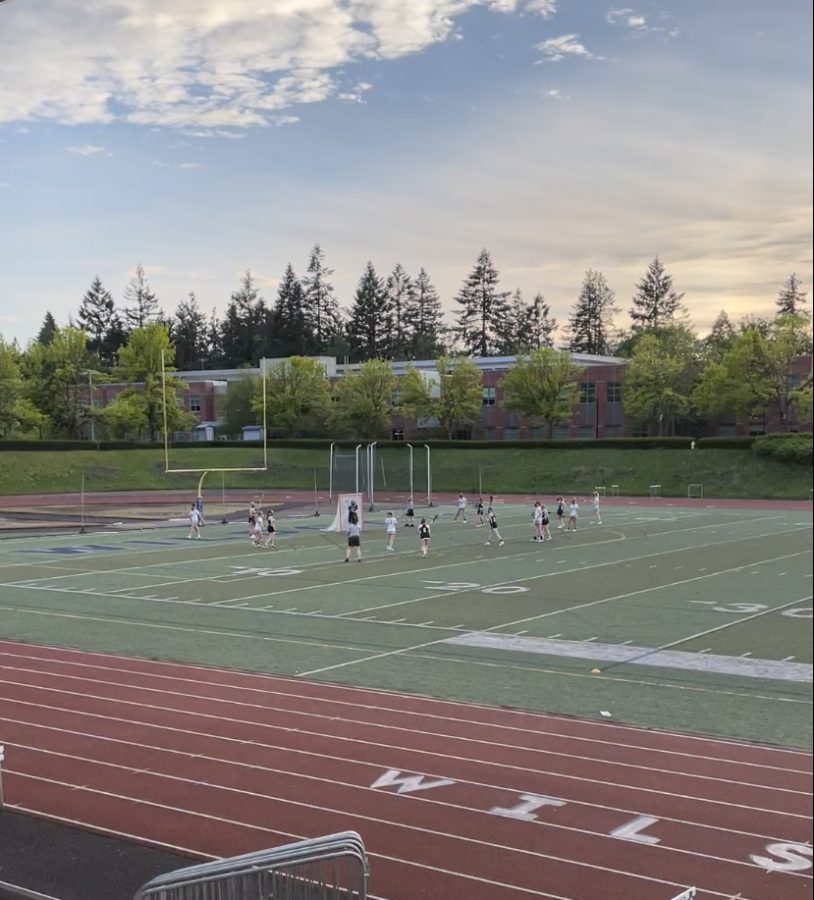How is the field set-up?
February 20, 2022
The view from the stands during the Cats’ 2021 game against Oregon City/Clackamas. The Cats’ won the game 19-13.
The majority of high schools in Oregon play lacrosse on the main field, where football and soccer are also played; but in regards to lacrosse’s spatial set-up, there are a few key differences.
For one, lacrosse goals are not directly on the end lines; instead, they are placed almost like hockey goals where you can go behind the goal and stay in bounds.
Around the goal itself is a small circle called the “crease.” At younger levels, coaches tell their players it’s “hot lava.” If any player, excluding the goalie, crosses into the crease, it is an immediate foul and the other team’s ball.
Another important thing to note are the out-of-bounds rules. While the side lines function like soccer or basketball (meaning if your team throws it out of bounds, then it’s the other team’s ball), the end lines work a little differently: if a player shoots the ball and it flys off-target and out-of-bounds, it’s not automatically the other team’s ball.
Let’s say I shoot the ball, and it sails left of the goal and past the end-line. If one of my teammates is closest to the ball when it goes out, it’s still my team’s ball. When you are watching a game and see girls run to the end line with their sticks out, even when it’s obvious they can’t get to the ball–this rule is why.
Subbing is also different than in other sports like basketball, where the ref has to call you in. In lacrosse, you can sub during any live play or dead ball, which allows the game to flow more smoothly.
The game is played with twelve players on the field at a time: four attackers, three midfielders, four defenders, and one goalie. Live subbing allows teams to sub their midfielders regularly to keep their legs fresh and thus their transitions smooth.
This focus on a continuous game has built a fast-paced and competitive game that rarely ever stops.
